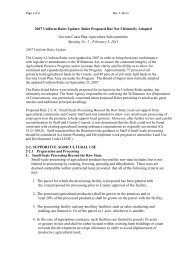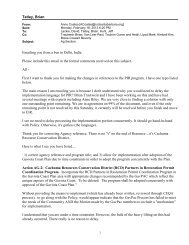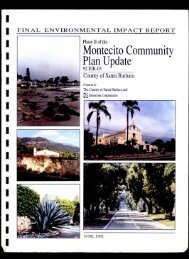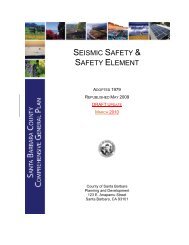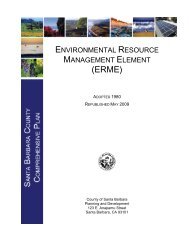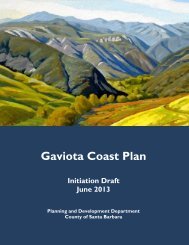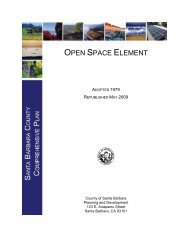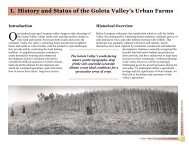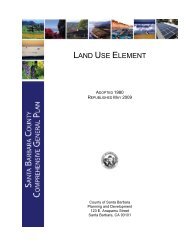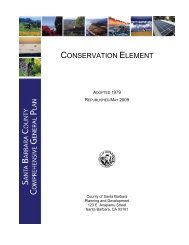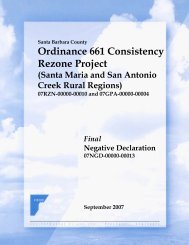Gaviotia layout 4 - PM 7.0 - Ocean and Coastal Policy Center ...
Gaviotia layout 4 - PM 7.0 - Ocean and Coastal Policy Center ...
Gaviotia layout 4 - PM 7.0 - Ocean and Coastal Policy Center ...
You also want an ePaper? Increase the reach of your titles
YUMPU automatically turns print PDFs into web optimized ePapers that Google loves.
Public Access<br />
p <br />
Environmental considerations<br />
2. Public access should avoid or minimize damage to environmental resources.<br />
a. Access on public l<strong>and</strong>s should be consistent with the environmental “carrying<br />
capacity” of the l<strong>and</strong> as determined <strong>and</strong> recommended through appropriate<br />
objective analysis.<br />
b. Public access <strong>and</strong> facilities should be sited <strong>and</strong> designed to minimize negative<br />
impacts on resource values. For example:<br />
• Trails should avoid degrading sensitive habitats.<br />
• Beach access should be designed to avoid degrading the coastal bluffs.<br />
• Parking facilities should be sited close to major existing roads to avoid the<br />
construction of new access roads.<br />
• Ample sanitation <strong>and</strong> trash facilities should be provided <strong>and</strong> maintained at<br />
all public access points.<br />
c. To provide increased beach access, additional trails on public l<strong>and</strong> or easements<br />
on private l<strong>and</strong>s should be sited to manage <strong>and</strong> direct access <strong>and</strong> eliminate<br />
damage to public <strong>and</strong> private l<strong>and</strong>. Environmentally destructive, illegal, or<br />
dangerous beach access should be improved or closed. This will increase public<br />
safety, reduce resource damage, <strong>and</strong> eliminate conflicts with private property<br />
owners.<br />
Design considerations<br />
3. The design <strong>and</strong> maintenance of public access facilities should emphasize low<br />
impacts <strong>and</strong> foster sustainability.<br />
a. Public access should be provided with the necessary management capability <strong>and</strong><br />
resources such as policing, liability management, trail maintenance, appropriate<br />
<strong>and</strong> necessary facilities, waste management, signs, <strong>and</strong> upkeep of parking<br />
areas.<br />
b. Commercial visitor serving structures (such as stores, restaurants, <strong>and</strong> motels/<br />
hotels) should be prohibited or limited to essential services <strong>and</strong> should be<br />
designed <strong>and</strong> sited to minimize visual <strong>and</strong> resource impacts. Public visitor<br />
serving structures, necessary <strong>and</strong> related to public access (such as trail signs,<br />
kiosks, interpretive exhibits, parking, <strong>and</strong> restrooms), should also be designed<br />
<strong>and</strong> sited to minimize visual <strong>and</strong> resource impacts.<br />
c. In areas where local owners or agencies control the design, public access<br />
facilities should be built on a scale sufficient to serve the needs of the Central<br />
Coast region.




